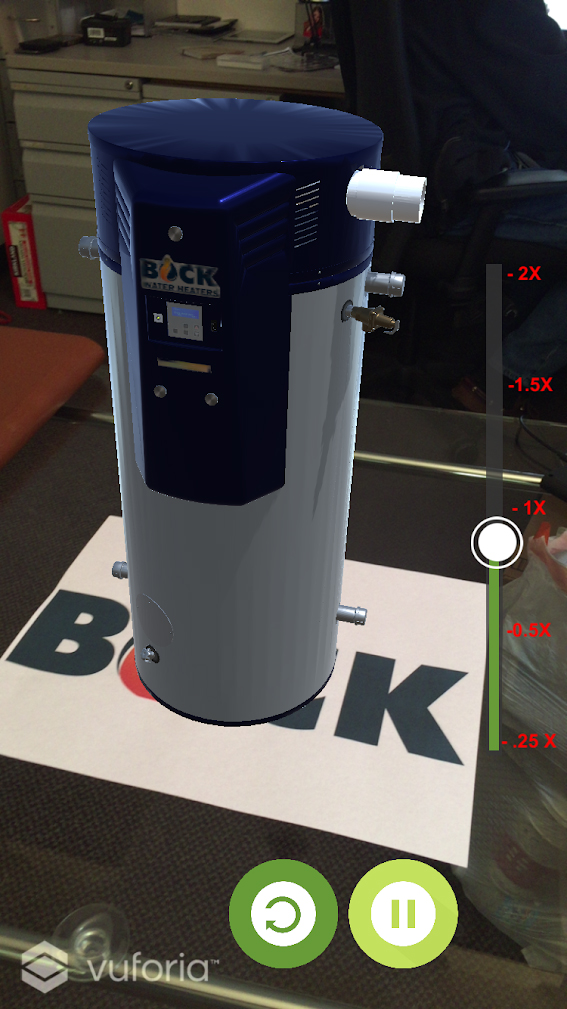Project Overview
Bock Water Heaters was looking for a way to differentiate themselves from their competition. They wanted to show what it was that made their flagship product, the OptiTherm, best in class. They also wanted to appeal to a younger generation of facility engineers in a way that would stick in their minds and place Bock far apart from the competition. I was asked to put together an experience that would communicate the benefits of the OptiTherm in a way that had not been done in this industry before.
Breaking the Ice
Virtual Reality is something that is hard to describe. It is something that needs to be experienced first hand and often leaves the user completely blown away. When I talk about VR, I am talking about 6 degree of freedom VR that is driven by a powerful computer and not mobile VR that consists of putting your smart phone into a viewer. For my introduction to the senior staff of the company, I needed to show the power of VR and what we could do with it.
I obtained a 3D solid model of the water heater from their engineers and quickly converted it to a usable mesh and reduced the poly count to a manageable size for my real-time 3D engine. I dropped the model into my VR sandbox environment and gave it a light blue material finish. I also added part of the blower assembly to the room, but made it 10 feet tall so that we could walk around it and inspect it closely. To demonstrate how impactful VR can be, I also added a model of their Turbo-Flu just outside of the room, but enlarged it to 40 feet across and a few hundred feet deep. I also added a catwalk platform from the edge to the middle of the flu so that users could walk out and look down into the abyss. To add to the effect, I added a smoke particle system that flowed up through the Turbo-Flu.
OptiTherm in VR Sandbox
Basic shading with minimal optimization
Catwalk into Turbo-Flu
Adding Some Realism
A real-time environment requires the models to be optimized. VR has a target frame rate of 90 frames a second so reducing the poly count is paramount when creating a compelling VR experience. I took the 3D model that was broken down into over 300 discrete parts and culled it down to a more manageable lot. I also colored and textured the parts to reflect what they looked like in real life even down to the screws on the case. The result was a very compelling virtual reproduction of the water heater that the user could experience in Virtual Reality.
Making a Mobile Version
The client wanted to get the VR experience out into the hands of all their sales reps so we decided to create a mobile VR version. The solution was to create a 360 panoramic video using a virtual panoramic camera from within Unity. The camera was animated and the video was created. Scenes were cut together and a voice over describing the experience was added using Adobe Premiere Pro. The resulting video was loaded onto an Android based all-in-one VR goggle for optimal playback.
Moving to AR
To create an experience that everyone could enjoy, we developed an Augmented Reality app for iOS and Android that showed the OptiTherm assembling itself. The user could move their phone around like a camera and view the animation from any angle they desired and learn about the OptiTherm. I utilized some of the advanced tracking features of Vuforia to persist the water heater even when the target was no longer seen.
AR Apps
The “OptiTherm” AR apps can be downloaded in the Apple App Store or the Google Play Store. The target can be printed from this link.
Conclusion
What started as a Virtual Reality showcase, turned into three deliverables that were accessible to three tiers of devices. Each experience was unique but tied into the overall theme that the client wanted.



